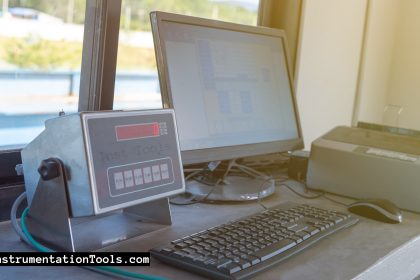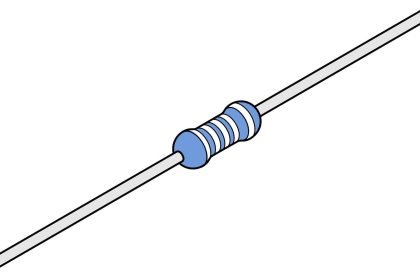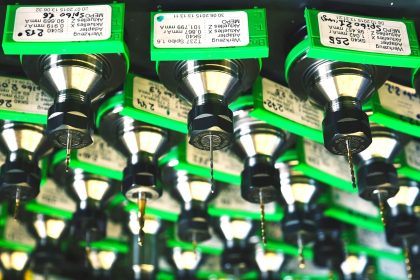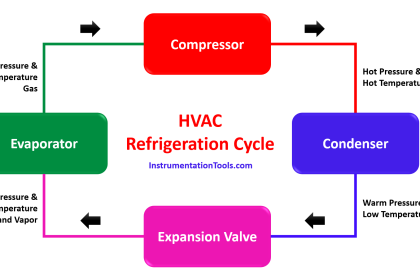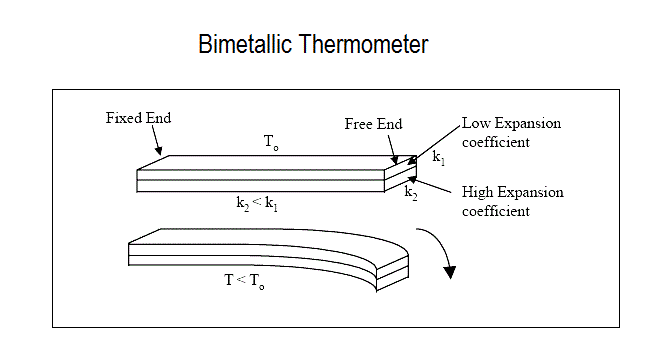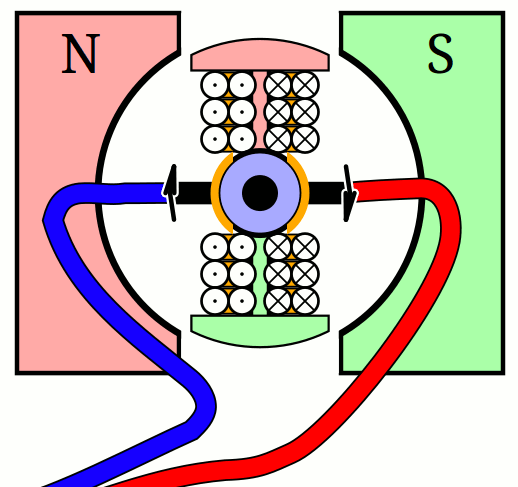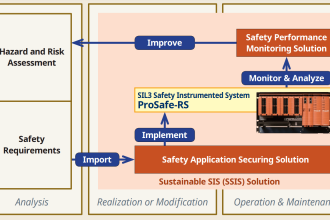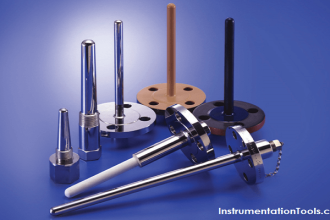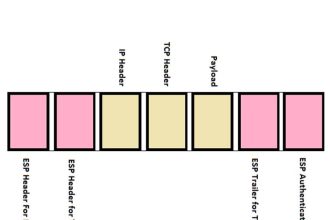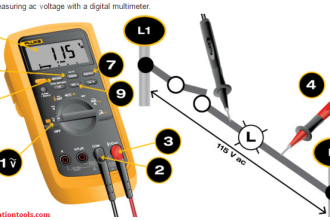The term MEMS is an abbreviation of a microelectromechanical system. A MEMS contains components of sizes from 1 micrometer (µm) to 1 millimeter(mm).
MEMS
A MEMS is constructed to achieve a certain engineering function or function by electromechanical or electrochemical means. The core element in MEMS generally consists of two principal components: a sensing or actuating element and a signal transduction unit.
Microsensors
Microsensors are the most widely used MEM devices today. A sensor converts one form of energy into another and provides the user with a usable energy output in response to a specific measurable input. One of the example is to convert the energy that is required to deflect the thin diaphragm in a pressure sensor into an electrical energy.
A sensor system that includes both the sensing element and a signal processing hardware. This signal processing unit makes the system smart because it will provide automatic calibration, interference signal reduction, offset correction, and self-test.
Microsensors are used to measure many physical quantities like pressure, optical, thermal, and acoustics, etc., There are so many microsensors available to perform various functions in a variety of industries.
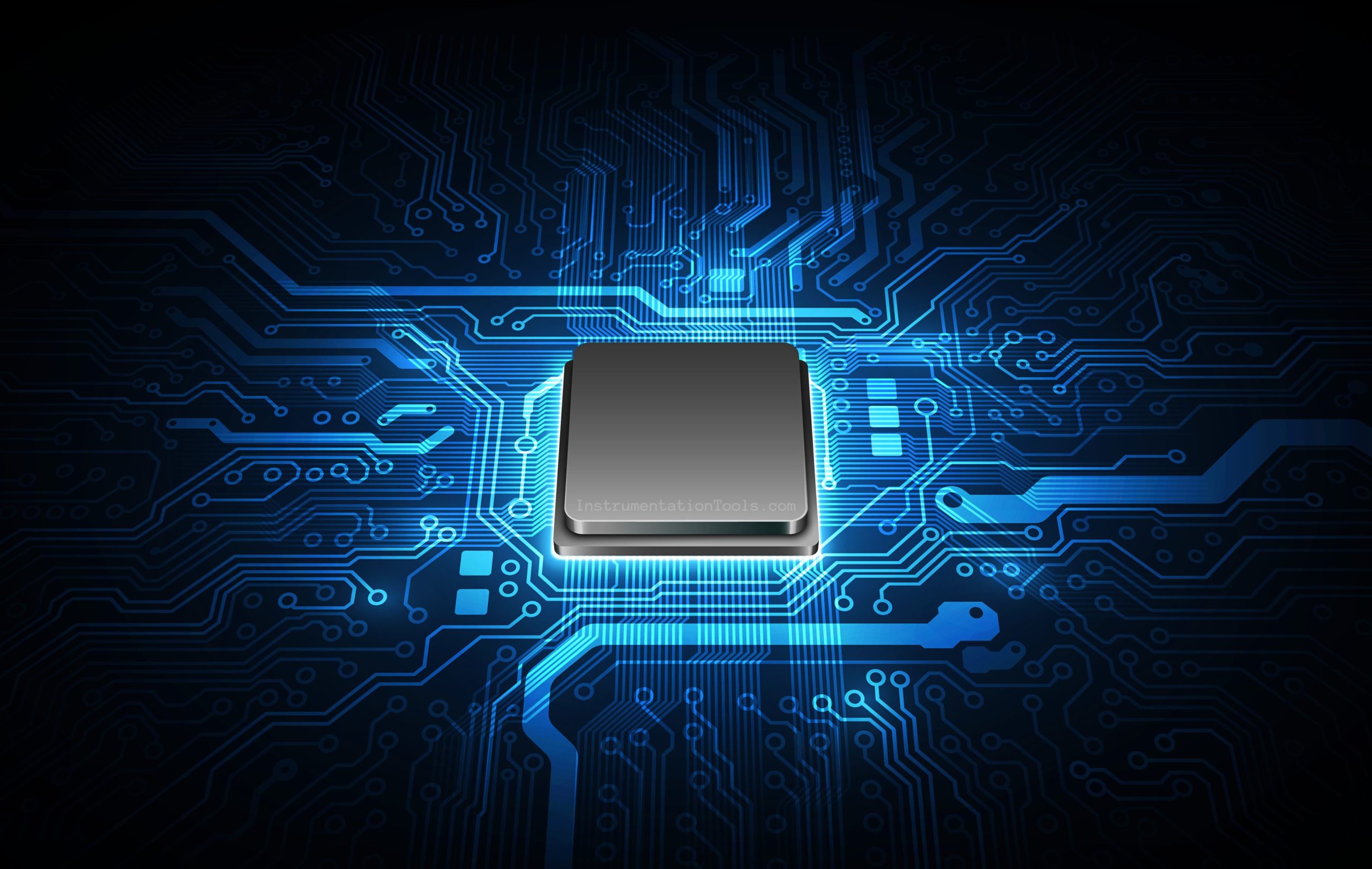
Microactuators
Actuators are normally defined as mechanical devices for moving or controlling something. The actuator is a very important part of a microsystem that involves motion.
Four principal means are commonly used for actuating motions of microdevices thermal forces, shape memory alloys, piezoelectric crystals, and electrostatic forces.
An actuator is designed to deliver a desired motion when it is driven by a power source. The driving power for actuators varies, depending on the specific applications.
Microsystem
A microsystem is an engineering system that contains MEMS concept that are designed to perform specific engineering functions. Despite the fact that many MEMS components can be produced in the size of micrometers, microsystems are typically in mesoscales which means it was in the size range of millimeters to centimeters.
These microsystems consist of three components mainly, they are sensor unit, actuator unit, and processing unit. One of the example of the microsystem is the operation of airbag deployment in an automobile system, in which the impact of the car in a serious collision is felt by a micro inertia sensor built on the principle of the micro accelerometer.
The Sensor generates an appropriate signal to an actuator that deploys the airbag to protect the driver and the passengers from serious injuries.
Design and Manufacturing of Microsystem
Five engineering disciplines are involved in microsystem design, manufacture, and packaging as described below:
Mechanical engineering principles are used primarily in the design of microsystem structures and the packaging of the components. These would involve many aspects of design analyses and control.
Electrical engineering involves electrical power supplies and the functional control and signal processing circuit design. For integrated microsystems, the IC and microelectronic circuitry that integrates microelectronics and microsystems make electrical engineering a major factor in the design and manufacturing processes.
Chemical engineering is an essential component in microfabrication and micromanufacturing. Almost all such process of fabrication involves chemical reactions. Some microdevice packaging techniques also rely on special chemical reactions. Electrochemistry is widely used in electrolysis to ionize substances for micromanufacturing purposes.
Material engineering also plays a vital role in the selection of materials for MEMS products that are used for microfabrication and manufacturing and also in packaging also. Theories of molecular physics are often used in the design of materials, characteristics, such as doping of semiconducting materials for electrical resistivity and Conductivity of the materials.
Last one was the Industrial engineering which was relate to the production and assembly of microsystems. Because, Optimum design of the fabrication process and control is essential in microsystem production.
Benefits of Microsystems
We all know the MEMS & microsystems components are of size range from Micrometer to millimeter. These are very small miniature types of products for big applications and controls. Miniaturization is one of the way to have new and competitive engineering systems performing multifunction with manageable size.
The need for miniaturization has become more prominent nowadays and in future it will shrink to the nano sizes for the same process. Now, the systems using this microsystems are more sophisticated because of its size and functions.
Some of the benefits having smaller components and hence a device or machine with good functionalities and operations are given below.
- Smaller systems tend to move more quickly than large systems because of lower inertia of the mass.
- Because of the small sizes, these devices encounters a fewer problems in thermal distortion and vibration because resonant vibration of a system is inversely proportional to the mass. Smaller the system lower the mass so it has higher natural frequencies than those expected from most machines and devices in operations.
- Because of their minute size it has more performance in smaller systems , which was particularly suitable for applications in medicine and surgery and in microelectronic assemblies in which miniaturized tools are necessary.
- Miniaturization is also desirable in satellites and spacecraft engineering to satisfy the prime concerns about high precision and payload size
- The high accuracy of miniaturized systems in motion and dimensional stability make them particularly suitable for telecommunication systems.
Applications of Microsystems
MEMS and microsystem product have been increasingly dominant in every aspect of commercial marketplace as the technologies for microfabrication and miniaturization continue to be developed.
Microsystems in Automotive systems
Microsensors are the major part in applications on the vehicles for determining the certain levels.
Following are the some of the areas where microsystems and sensors were used in the vehicles.
- Manifold or temperature manifold absolute pressure sensor
- Exhaust gas differential pressure sensor
- Fuel rail pressure sensor
- Combustion sensor
- Engine oil sensor
- Transmission sensor
- Tire pressure sensor
- Air bag deployment system to protect the drivers and passengers from injury in vehicle collision
- Antilock braking systems
- Suspension Systems
- Pressure and displacement sensor
Microsystems in Health Care systems
- Disposable blood pressure transducer for measuring the blood pressure level
- Intrauterine Pressure Sensor for monitor pressure during child delivery.
- Angioplasty pressure sensor for monitor the pressure inside the balloon once it is inside the blood vessel
- Infusion pump pressure sensors to control the flow of intravenous fluids and permits several drugs to be mixed in one flow channel
- Diagnostic and analytical systems such as capillary electrophoresis systems.
- Lung Capacity meters
- Kidney dialysis equipment
Microsystems in the Aerospace Industry
- Pressure Sensors for oil, fuel, transmission and hydraulic systems.
- Wind tunnel instrumentation
- Sensors for fuel efficiency and safety
- Inertial guidance systems with micro gyroscopes, accelerometers and fiber optic gyros
- Propulsion system with micro pressure sensors, chemical sensors for leak detection , arrays of single shot thrusters, continuous and pulsed micro thrusters.
- Thermal control systems with micro heat pipes, radiators and thermal switches.
Microsystems in Industrial Products
- Sensors for Hydraulic systems and Paint spray systems
- Sensors in Refrigeration system
- Heating, Ventilation, and air conditioning system
- Water level controls
Microsystems in Telecommunications
- Optical switching and fiber-optic couplings
- RF switches
- Tunable Resonators


